Inside the 2021 Longlist | Management & Workplace Culture
November 24, 2021
Dylan Schleicher, Porchlight's Marketing and Editorial Director, takes a glimpse inside the best Management & Workplace Culture books of 2021.
While there are many management and workplace issues that have been unique to the circumstances of the COVID-19 pandemic, I have found myself drawn to books that help explain why we were so ill-prepared to meet them in the first place. We have a tendency to focus on technological solutions and tools, data points and policies and big pivots that can help us address the larger issues that confront us, and all of that is necessary. An understanding of the systems we live within and forces that shape them is vital. But those systems and forces are human in nature and business is, at its core, a fundamentally human pursuit that—if focused on the humanity and wellbeing of others—can be a source of progress and prosperity for people in our organizations and the world rather than destruction or denigration. The following five books are ones I’ve found hope in this past year, ones that show us how the relationships and connections and conversations we have and form with each other are one of the most important sources of input and influence we have in any system we are a part of.
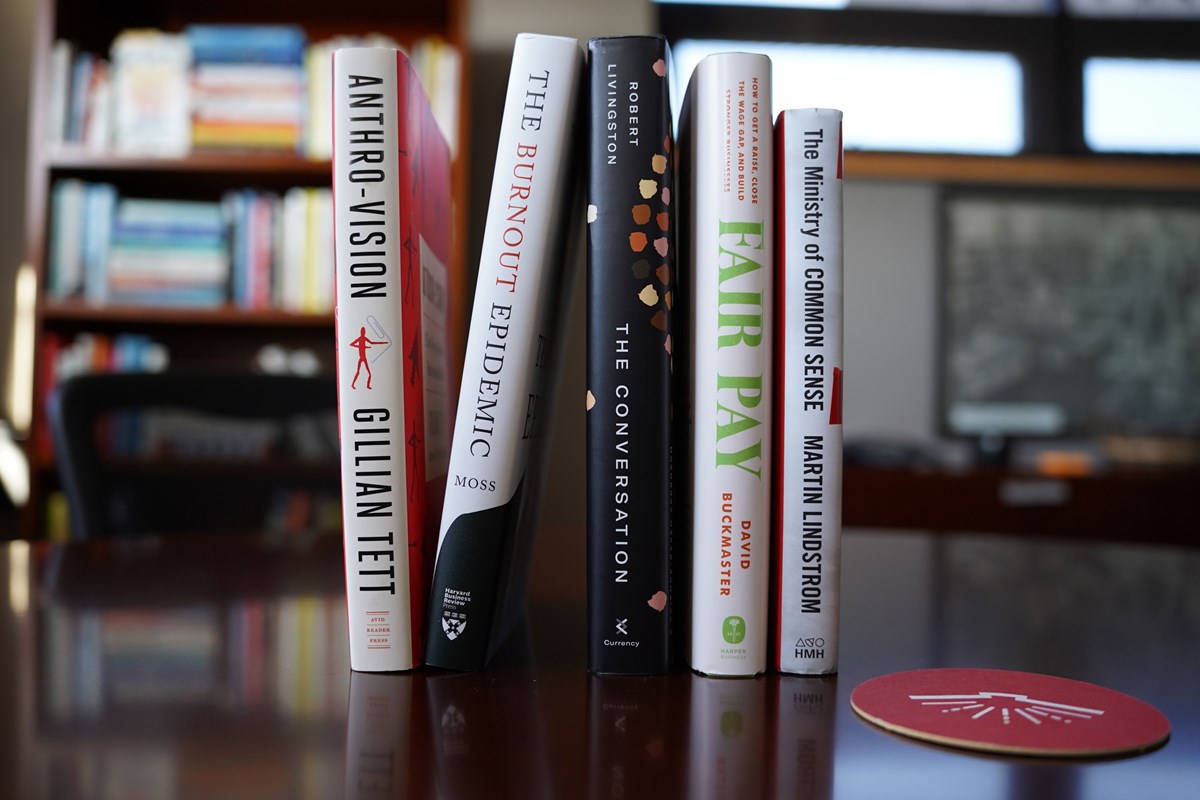
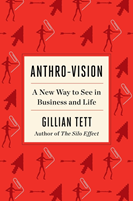 Anthro-Vision: A New Way to See in Business and Life by Gillian Tett, Avid Reader Press
Anthro-Vision: A New Way to See in Business and Life by Gillian Tett, Avid Reader Press
Gillian Tett’s 2015 book, The Silo Effect, turned an anthropological lens on organizational silos, explaining how they can be broken down to incubate ideas across different disciplines and unleash innovation in organizations. This year, in Anthro-Vision, she broadened those lessons to help us understand the need to get an outsider’s view on things—to make the “strange familiar” and the “familiar strange”—in every aspect of our life and work. The tools of anthropology, particularly the face-to-face, human observation and interaction used in ethnographic research, she insists, “are as useful in making sense of an Amazon warehouse as in an Amazon jungle.” She encourages us to use a new AI—anthropology intelligence—alongside artificial intelligence and big data, and social science alongside computer science, to uncover what we’ve become blind to and overcome the pre-existing biases that are baked into big data sets. So, rather than abandon expertise or science, we can embrace it by broadening our view to overcome the tunnel vision on the “big data” alone and develop a lateral vision that takes into account the “thick data” and descriptions that comes from the social context, culture, and people involved. If we get the process right, instead of obscuring real, individual human beings in a mass of numbers, we can learn more about each other and ourselves in the process.
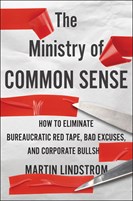 The Ministry of Common Sense: How to Eliminate Bureaucratic Red Tape, Bad Excuses, and Corporate BS by Martin Lindstrom, Mariner Books
The Ministry of Common Sense: How to Eliminate Bureaucratic Red Tape, Bad Excuses, and Corporate BS by Martin Lindstrom, Mariner Books
Like Gillian Tett, Martin Lindstrom understands organizations for what they truly are: human beings working together in a particular context and culture. And he wrote a great book, Small Data, that similarly stressed the need for gathering information from real human interactions out in the real world. He opens his new book in a place where he spends much of his time as someone who flies all over the world helping companies gather that data—at the airport. Realizing that he has forgotten his headphones, he pays an exorbitant amount for a new set at an airport kiosk, only to find over the next forty-five minutes that he can’t free them from the hard plastic they are incased in. “For some reason,” he writes, “I left my chainsaw and other forestry equipment at home.” The Ministry of Common Sense is a legitimately funny book in which Lindstrom puts on full display his knack for revealing how bureaucratic processes and environments get in the way of people working easily and sensibly together—and, most importantly, for the customers they hope to serve—alongside his sense of humor. The book mixes corporate gallows humor with an exploration of how the Kafka-esque corners and hallways of company life shape the frustrations we experience with the products and services such cultures create. Most importantly—as the title suggests—it offers common sense solutions and practices all firmly enmeshed not in hard plastic, but human empathy and understanding.
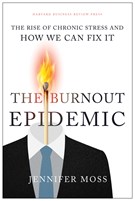 The Burnout Epidemic: The Rise of Chronic Stress and How We Can Fix It by Jennifer Moss, Harvard Business Review Press
The Burnout Epidemic: The Rise of Chronic Stress and How We Can Fix It by Jennifer Moss, Harvard Business Review Press
If you’ll permit me to change gears and speak in book titles for a moment, The Trouble With Passion—at least in using it as a guide to what work you should pursue—is that Work Won’t Love You Back. (Sorry, I needed to find some way to get those two wonderful books a mention on this list.) Yet, even when we don’t place our work in the position of providing our primary source of meaning in life, or pursue our dreams through paid work, it can still burn us out. Burnout is, in fact, ubiquitous across industries and professions and pay scales. For those who do find meaning in their work, it is just as bad if not worse. Jennifer Moss, who studies the issue and has now written one of the best books on the subject, has even succumbed to it herself. And, as Moss notes, “The International Labour Organization reports that excessively long working hours contribute to the deaths of 2.8 million workers every year.” Burnout is literally killing people. We can mistake the ubiquity of the problem as a necessity of modern life, but Moss helps us understand that the problem lies not with us as individual workers, but with the organizations and systems that perpetuate the work conditions that lead to burnout. And organizations and systems, as we know, can change. But that doesn’t happen on its own; We are the ones who must change them. Moss uncovers the root causes of burnout and gives those tasked with managing organizations—and, most importantly, the human beings within them—strategies and tactics to support people to turn back an epidemic that existed in our workplaces long before COVID hit and was in most places made worse by it.
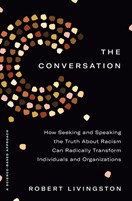 The Conversation: How Seeking and Speaking the Truth About Racism Can Radically Transform Individuals and Organizations by Robert Livingston, Currency
The Conversation: How Seeking and Speaking the Truth About Racism Can Radically Transform Individuals and Organizations by Robert Livingston, Currency
Another public health issue endemic to our society and workplaces is racism. Robert Livingston, a social psychologist and a leading expert on the science underlying bias and racism in organizations, is convinced that it doesn’t have to be. One thing about empathy is that we often have different lenses and anchors in our own understanding of reality that can lead to a lack of empathy and misunderstanding. So, like many of the other books on this list, rather than eschewing science and expertise, Livingston leans on his and uses “science as an arbiter of fact when it comes to assumptions about racism.” Yet, he also understands that dismantling systems that have been in place for centuries, and ideas that have infected our thinking that have been passed down through generation, is as much about making new connections and building relationships as it is about the science he brings to bear. It is a social process, one he has also honed and equally eloquent expertise in. And reading his book is, like the conversations about race he teaches you to foster and lead, a process. This one, Livingston suggests, will take you about one full day. So, he asks, “Are you willing to invest one full day of your life to substantially improve our society? I am confident that it will be worth it.” Why is he so confident? Because he believes that “Racial equity is an achievable goal,” that “racism is solvable.” That belief, I think he’ll convince you, is backed by “logic, data, and scientific evidence,” but it all begins with human conversations.
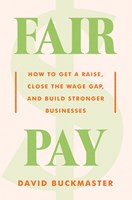 Fair Pay: How to Get a Raise, Close the Wage Gap, and Build Stronger Businesses by David Buckmaster, Harper Business
Fair Pay: How to Get a Raise, Close the Wage Gap, and Build Stronger Businesses by David Buckmaster, Harper Business
I am going to assume that you don’t think you are paid enough. I am also going to assume that you are right about that, because most people aren’t—a reality David Buckmaster brings home in his book Fair Pay. It takes on issues as personal as how to advocate for better pay for yourself, and as broad as how to change the system to rid it of its persistent racial and gender disparities and finally provide equal pay for equal work. More broadly, it is about wage inequality across the board and what we, and the companies we work in, can and should do about it. A corporate compensation expert, Buckmaster cracks open the black box of how people in his profession have traditionally gone about the job of setting pay for very large swaths of the American workforce, what that means for all of us, and why it must change. In his own estimation, “The current system of pay we accept to be a normal and natural result of the free market is, for most workers, neither normal nor natural, and this market failure is putting the entire economic system at risk.” I don’t know if I’ve ever come across a book that mixes the “nuts-and-bolts" of business with big thinking as easily as this one. After all, there is nothing more basic to business than decisions on how to compensate employees, and there is nothing that could change the country quite so quickly or directly as tackling income inequality by paying most of them more. As Buckmaster writes, “Now is the time to redeem the idea of fairness,” and his book is a perfect nuts-and-bolts, big picture place to start.







